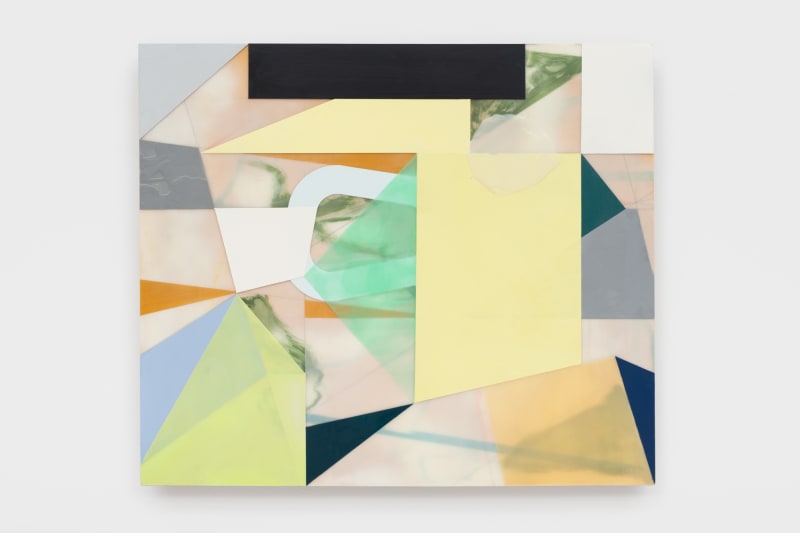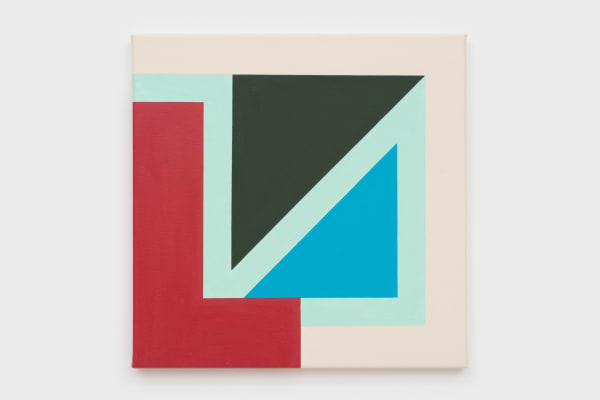Hales Online Viewing Room | Frieze Art Fair
Andrew Bick, Chitra Ganesh, Sunil Gupta, Virginia Jaramillo, Ebony G. Patterson, Maja Ruznic, Gray Wielebinski, Mary Webb
Preview days: 7 – 8 October 2020
Public days: 9 – 16 October 2020
Hales is delighted to be participating in Frieze London’s 2020 online viewing room with a selection of artists who reflect the gallery’s vision and programming. All with their own innovative approaches to artmaking, the individual practices of Andrew Bick, Chitra Ganesh, Virginia Jaramillo, Ebony G. Patterson, Maja Ruznic, Gray Wielebinski and Mary Webb continue to provide pertinent perspectives on subject and medium.
Andrew Bick’s (b. 1963 Gloucestershire, UK) research-led practice seeks to reconsider histories of constructivism and systems art. His work is based on the belief that disruption within a system helps us relearn the process of paying attention.In Bick’s paintings, mediated layering of geometry and gesture act as an antidote to a world of instantaneous information. An amalgamation of oil paint, watercolour, marker pen and encaustic are used to carefully block off areas, building the surface and composition, contrasting with casual-seeming brushstrokes and open areas of untouched support.
Across a twenty-year practice, Chitra Ganesh’s (b. 1975 Brooklyn, NY, USA) diverse works explore storytelling traditions and mythologies, bringing important historical conversations to the contemporary moment. With influences including South Asian iconography, Bollywood posters, science fiction, and vintage comic books, Ganesh subverts traditional storytelling to create women and queer-centric narratives of the future. She draws out alternative depictions of sexuality and power from popular stories and histories, highlighting the accounts of female protagonists, which have often been subsumed or marginalized by plot lines that reproduce the contours of majoritarian power.
Sunil Gupta (b. 1953 New Delhi, India) has over a career spanning more than four decades maintained a visionary approach to photography, producing bodies of work that are pioneering in their social and political commentary. The artist’s diasporic experience of multiple cultures informs a practice dedicated to complex themes of race, migration and queer identity - his own lived experience a point of departure for photographic projects, born from a desire to see himself and others like him represented in art history. Gupta has remained dedicated to advocating the visibility of queer identity, cultivating a body of work which is simultaneously political and deeply personal. Gupta’s first major retrospective, From Here to Eternity, will open at The Photographers’ Gallery, UK 9th October 2020.
In Virginia Jaramillo’s (b. 1939 El Paso, TX, USA) six-decade career, she has forged a unique voice, exploring abstraction through extensive experimentation with material, process and form. At the core of her works is an investigation into the structure of our physical, spiritual and mental worlds. In 1979, Jaramillo stepped away from the traditional canvas to explore other media; the Siteworks signify her momentous return to painting in 2018. In these works, Jaramillo focuses in on the intricacies of the structures left behind by ancient cultures: an in-depth study into the physical and spiritual life of ruins. In Site No. 3, 51.1789° S, 1.8262° W (2018), the artist takes inspiration from the prehistoric monument, Stonehenge in the UK. Jaramillo’s first solo museum show – Virginia Jaramillo: The Curvilinear Paintings, 1969 –1974 will open at the Menil Collection, Houston, Texas, 26th September 2020.
In an expansive practice, Ebony G. Patterson (b. 1981 Kingston, Jamaica) addresses visibility and invisibility, through explorations of class, race, gender, youth culture, pageantry and acts of violence, within the context of “post-colonial” spaces. Entrancing and colourful, Patterson’s works command the viewer to look beyond their rich formal characteristics and to acknowledge the realities of social injustice. Entourage (2010), the first piece from Patterson’s ‘Fambily’ series of photographic installations (2010-13), explores the role of the gang as a surrogate family – a complex structure whose positive elements are usually ignored.
Maja Ruznic (b. 1983 Bosnia & Hercegovina) is primarily a painter, drawing on personal and collective memories to create works that deeply connect with human psyche. Ruznic deftly weaves themes of trauma and suffering with mythology and healing, softening the darker subject matter in her work. This softening is then applied to the process of painting, where blurring and allowing shapes to bleed into one another symbolically destabilizes borders. Mother (2020) draws on Ruznic’s memory of the day she was reunited with her mother after fleeing Bosnia with her grandparents at the start of the Bosnian war in April 1992. The painting evokes the feelings and memories of that day – the figure’s arms are stretched out, longingly reaching towards something.
Gray Wielebinski (b. 1991 Dallas, TX, USA) reconfigures and transforms the iconography and visual codes of sports and mainstream media to explore themes of identity, mythology, nationhood, memory, gender and sexuality. Reconfiguring and transforming iconography and visual codes, their work seeks to navigate and question society’s frameworks and belief systems. Wielebinski deftly confronts realities in order to imagine and propose alternatives. In recent collages, Wielebinski puts together new forms and ways of embodiment, questioning what makes a body more than the sum of its parts. They dissect figures, directly challenging our obsession with ‘reading’ bodies – in their intuitive combination of body parts, they make new creatures.
Over a career spanning five decades, Mary Webb (B. 1939 London, UK) has mastered the interrelationship of colour in her complex geometric paintings. The works featured in this presentation exemplify a practice committed to formal abstraction. Meticulously planned, each piece balances subtle interplays of colour with compositions that avoid one focal point, through her exploration of diagonal compositions. Rooting the work in place, Webb often titles her series with the name of specific locations. She has the sensibility of a landscapist, drawing inspiration from the places she travels to, registering colour, shape and shifting light. At the core of her work lies the considered relationship between formal elements, rendering the world around her as a timeless abstraction.



![Andrew Bick, OGVGGT [double echo], 2020](https://artlogic-res.cloudinary.com/w_600,c_limit,f_auto,fl_lossy,q_auto/ws-artlogicwebsite0652/usr/exhibitions/images/exhibitions/161/andrew-bick-ogvggt-double-echo-2020-acrylic-pencil-oil-watercolour-and-wax-medium-on-linen-on-wood-in-two-2-parts-each-76-x-64-x-3.5-cm-overall-dimensions-76-x-141-cm-a_bic0264.jpg)














